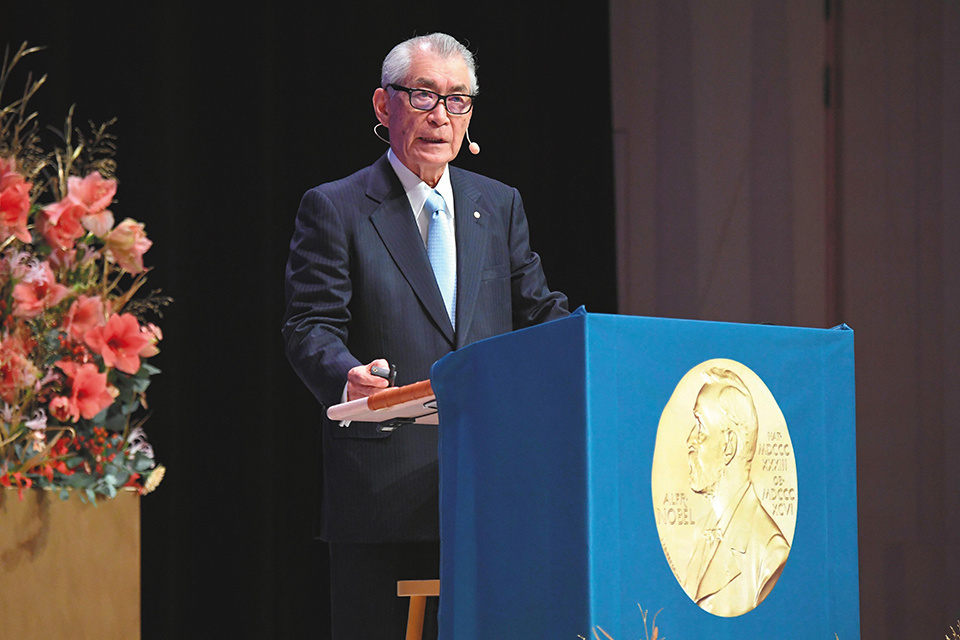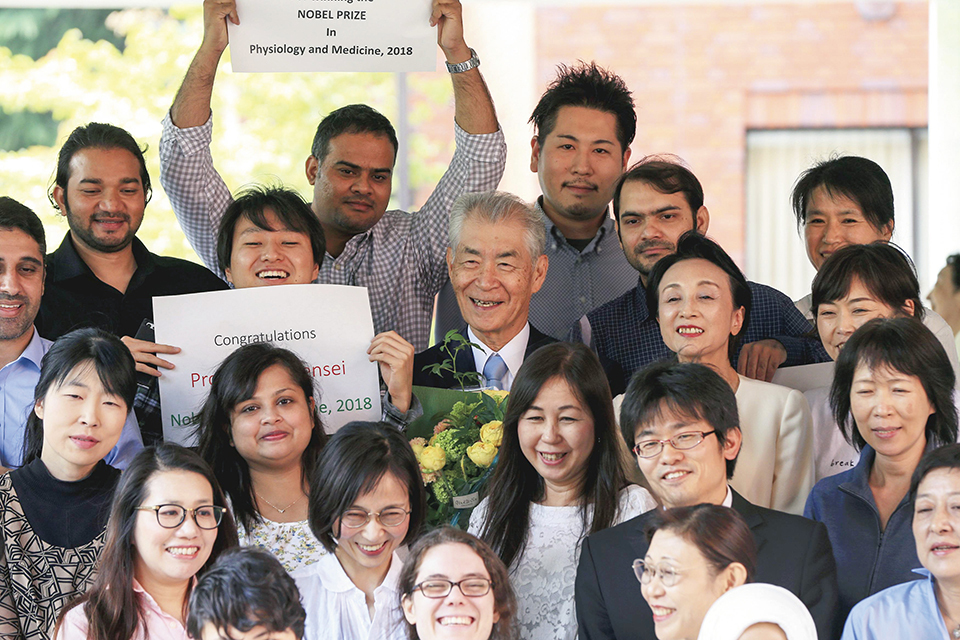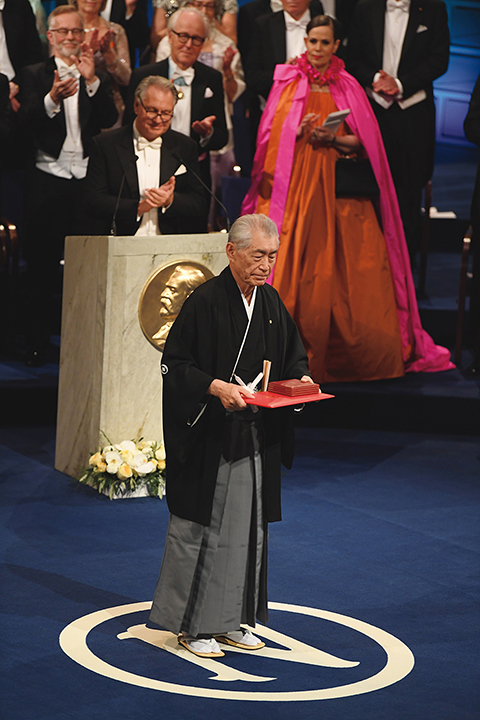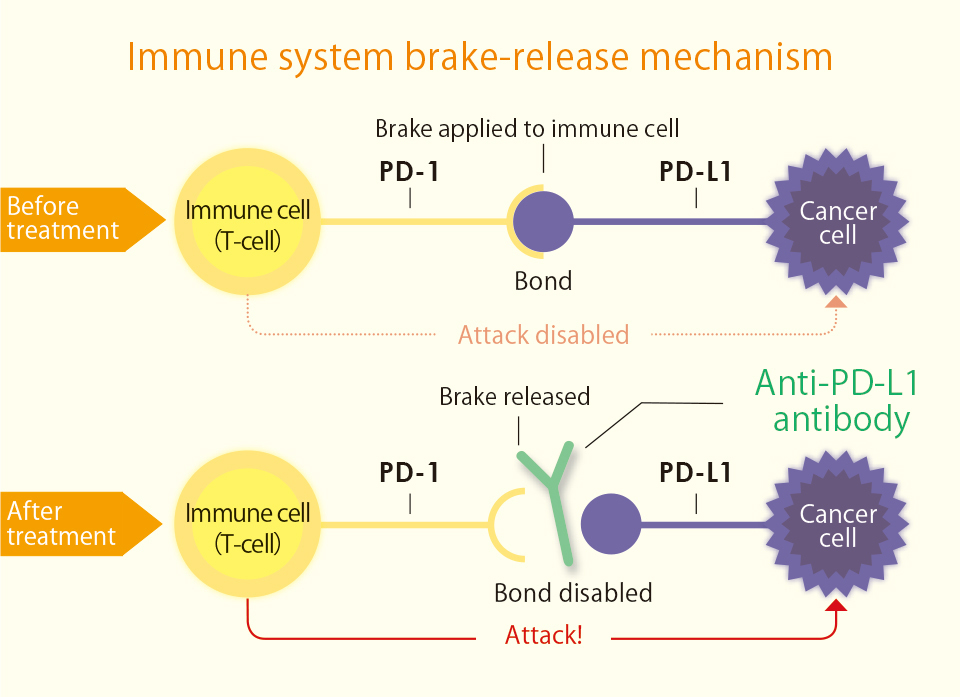Dr. Tasuku Honjo of Kyoto University won the 2018 Nobel Prize in Medicine.
His findings have led to the development of new cancer treatments.

Born in Kyoto in 1942, Tasuku Honjo received a M.D., Ph.D. in physiology from the Graduate School of Medicine at Kyoto University in 1975. His titles include Deputy Director-General and Distinguished Professor of the Kyoto University Institute for Advanced Study, and President of the Foundation for Biomedical Research and Innovation at Kobe. He has also been recognized as a Person of Cultural Merit and received the Order of Culture.

At Kyoto University, Dr. Honjo smiles in the company of students and researchers overjoyed at the news about his winning the Nobel Prize.

Dr. Honjo attending the Nobel Prize Award Ceremony (Stockholm, December 2018) dressed in traditional Japanese formal attire consisting of a haori jacket and trouser-like hakama.
Dr. Honjo has shed light on “PD-1” a protein on the surface of immune cells that suppresses their ability to function.
His research began quite by accident. Fascinated by “a protein with no apparent purpose” found by a graduate student in his laboratory, Dr. Honjo named the protein “PD-1” and began probing its secrets. Gradually it became apparent that it acts like a “brake,” shutting down the immune response.
“As someone who cares about medical science, I’m always thinking about how to connect basic research with diagnoses and the treatment of disease,” he says. Further research established that this brake stops immune cells from attacking cancer cells, followed by the discovery that, by releasing this brake, it was possible to restore the inherent immune potential of the human body and thus fight the cancer. Conventional cancer treatments generally work on the principle that radiation or anticancer drugs “directly attack” the cancer, but this marked the dawn of a completely new method.
Once this idea had been validated by clinical trials, the new approach was used to develop new cancer treatments, which, being particularly effective for certain types of cancer, are now being used all around the world.
Yet, the fact that this effect is not seen in all cancers and for all patients is a significant challenge. “This therapy is still at an early stage, like the penicillin stage of treating infectious diseases” he explains. “Further research is needed to discover the reasons why it doesn’t always work, and to make it effective for more people.” He adds with a note of hope: “As happened with our ability to treat infectious diseases, the day will surely come - by the end of this century at the latest - when humans will no longer be threatened by cancer.”
Quite a few persons have recovered from serious illness by treatments arising from his research. Whenever such a former patient thanks him personally, he says it gives him profound satisfaction.
“To directly witness the meaningfulness of my research, and to have won such a prize - I feel very fortunate.”
Eternally curious and skeptical about anything he hasn’t seen with his own eyes, he continues to be occupied by the challenge of finding new possibilities opened up by PD-1 from his laboratories in Kyoto and in the Kobe Biomedical Innovation Cluster ( see the article) - such is the diligence that permeates a life devoted to research.

The mechanism discovered by Dr. Honjo’s research.
When a PD-L1 protein of a cancer cell binds to the PD-1 protein of a T-cell, which is the body’s main weapon in the fight against cancer, brakes are applied to the T-cell’s immune response.
An “anti-PD-L1 antibody,” developed according to this method, can release the brake, allowing the T-cell to resume its attack on cancer cells.
